Rural Development Hubs
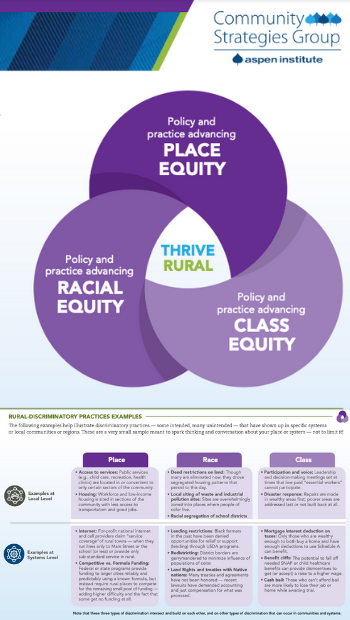
Thrive Rural Framework: Foundational Element
The Thrive Rural Framework is a new tool to help you take stock, target action, and gauge progress on rural prosperity. We...
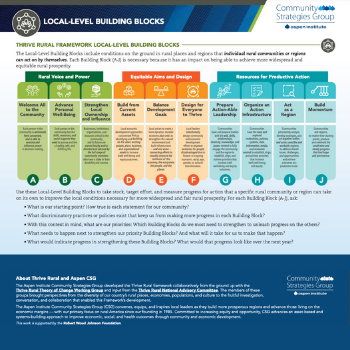
Thrive Rural Framework: Local-Level Building Blocks
The Thrive Rural Framework is a new tool to help you take stock, target action, and gauge progress on rural prosperity. We...
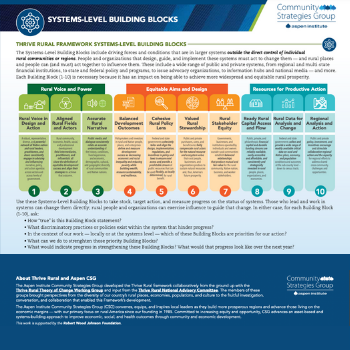
Thrive Rural Framework: Systems-Level Building Blocks
The Thrive Rural Framework is a new tool to help you take stock, target action, and gauge progress on rural prosperity. We...

BUILDING MOMENTUM FOR YOUR LONG-TERM VISION
Citizens' Institute on Rural Design
Webinar recording from Citizens Institute on Rural Design. Lessons help your team build momentum for your long-term vision.

Native Nation Building: It Helps Rural America Thrive
Native nations and rural communities, working side-by-side and together, can strengthen the potential for thriving rural regions.

CAPTURING SHARED IMPACTS OF THE PARTNERS FOR RURAL TRANSFORMATION
Urban Institute
With a goal to transform the fortunes and futures of rural and Native communities, the Partners for Rural Transformation (PRT) centers community needs and hopes in its work.
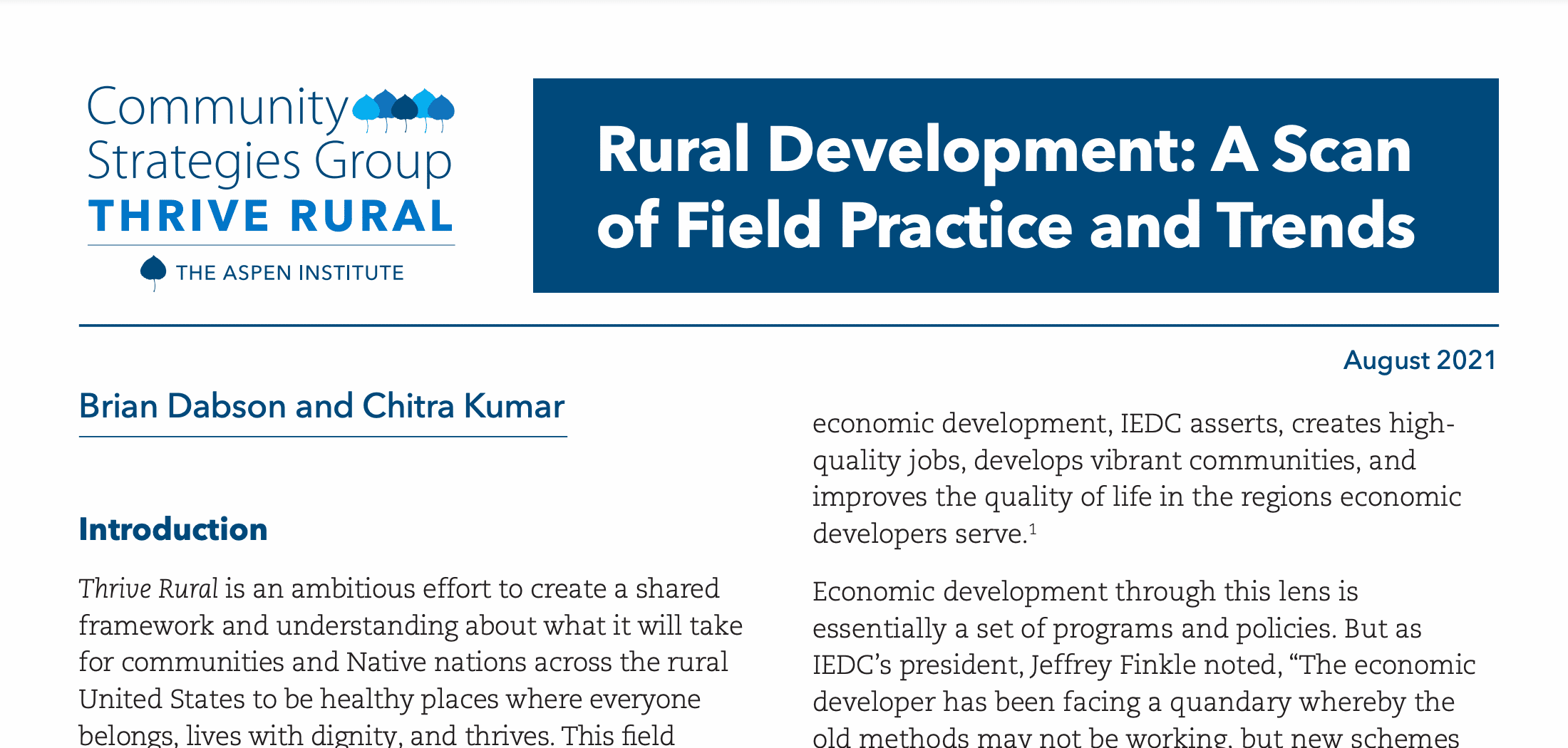
Rural Development: Field Practice and Trends
What must happen for economic development to foster a more prosperous, healthier, equitable and environmentally sustainable rural America? This scan...

Still Open for Business: Working with Minority-Owned Rural Firms through the Pandemic
Jul. 22nd, 2020, 2PM
STILL OPEN FOR BUSINESS POWERPOINT Racially and ethnically diverse populations comprise 21 percent of rural America—but produced 83 percent of...

A Few Things to Know About Rural America
Too often, people lump all of rural America into one “flyover-country” stereotype. This blog shares a few truths worth knowing about rural America.

Thrive Rural: Connecting Development, Health, & Opportunity
One in five people in the U.S. lives in a rural or tribal community. Many rural places are dynamic and...
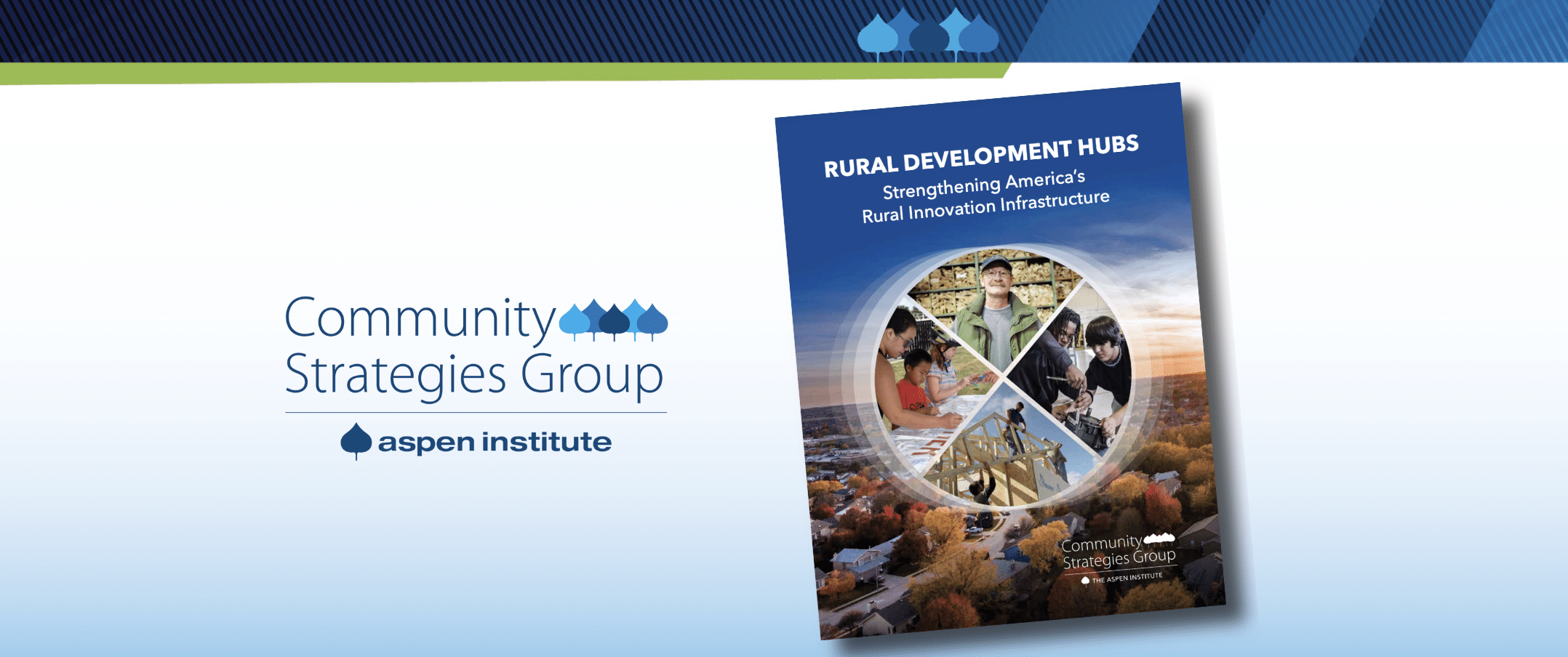
Rural Development Hubs Report
Rural Development Hubs are a specific set of intermediaries that are doing development differently in rural America. They are main players advancing an asset-based, wealth-building, approach to rural community and economic development.

Collaboration and Innovation for a Better Rural West
Insights from rural leaders working across divided local public opinion, fractured economies, confusing policy and regulation, and litigation to forge productive local partnerships that benefit rural communities and their surrounding landscapes.
